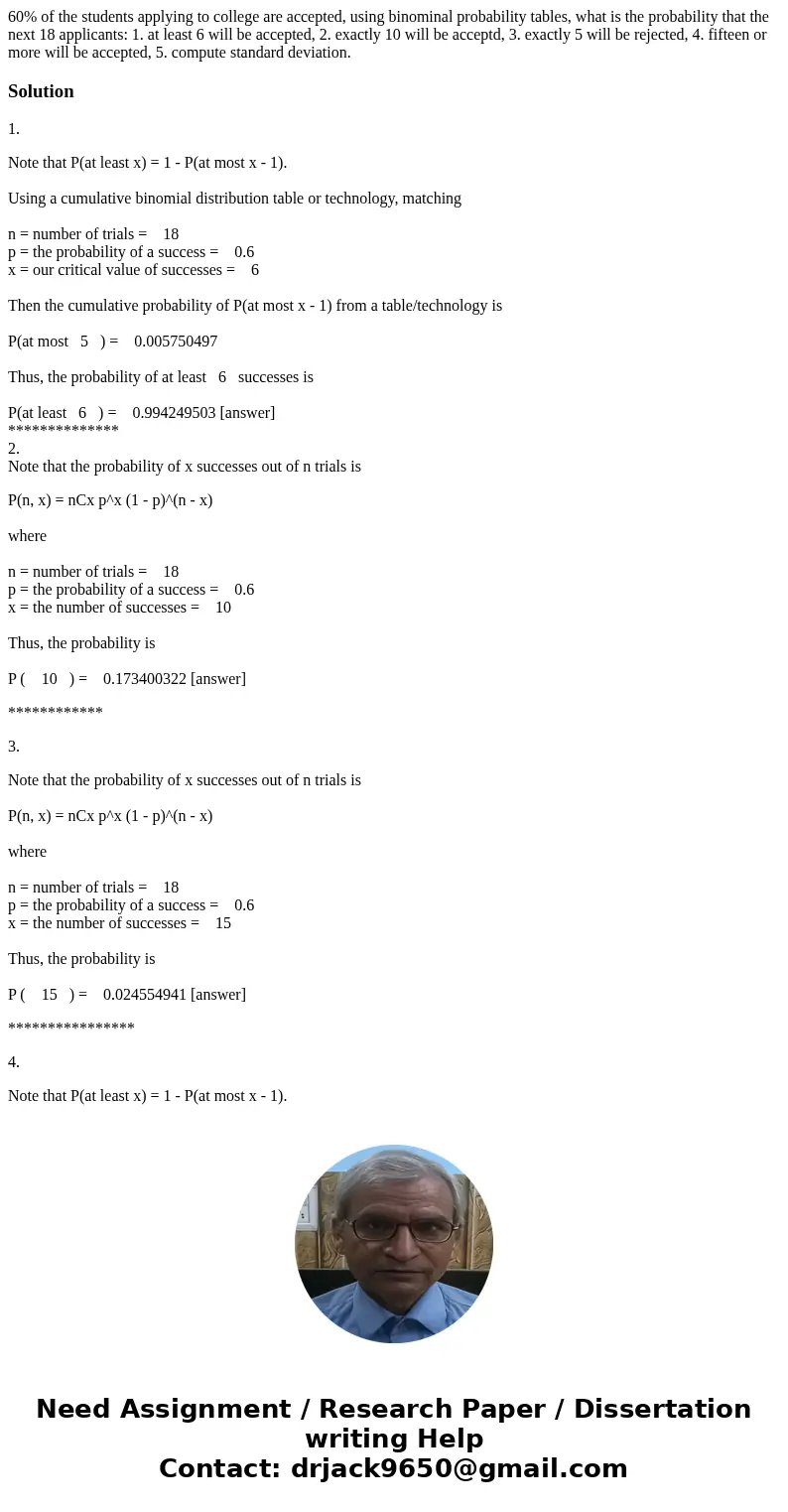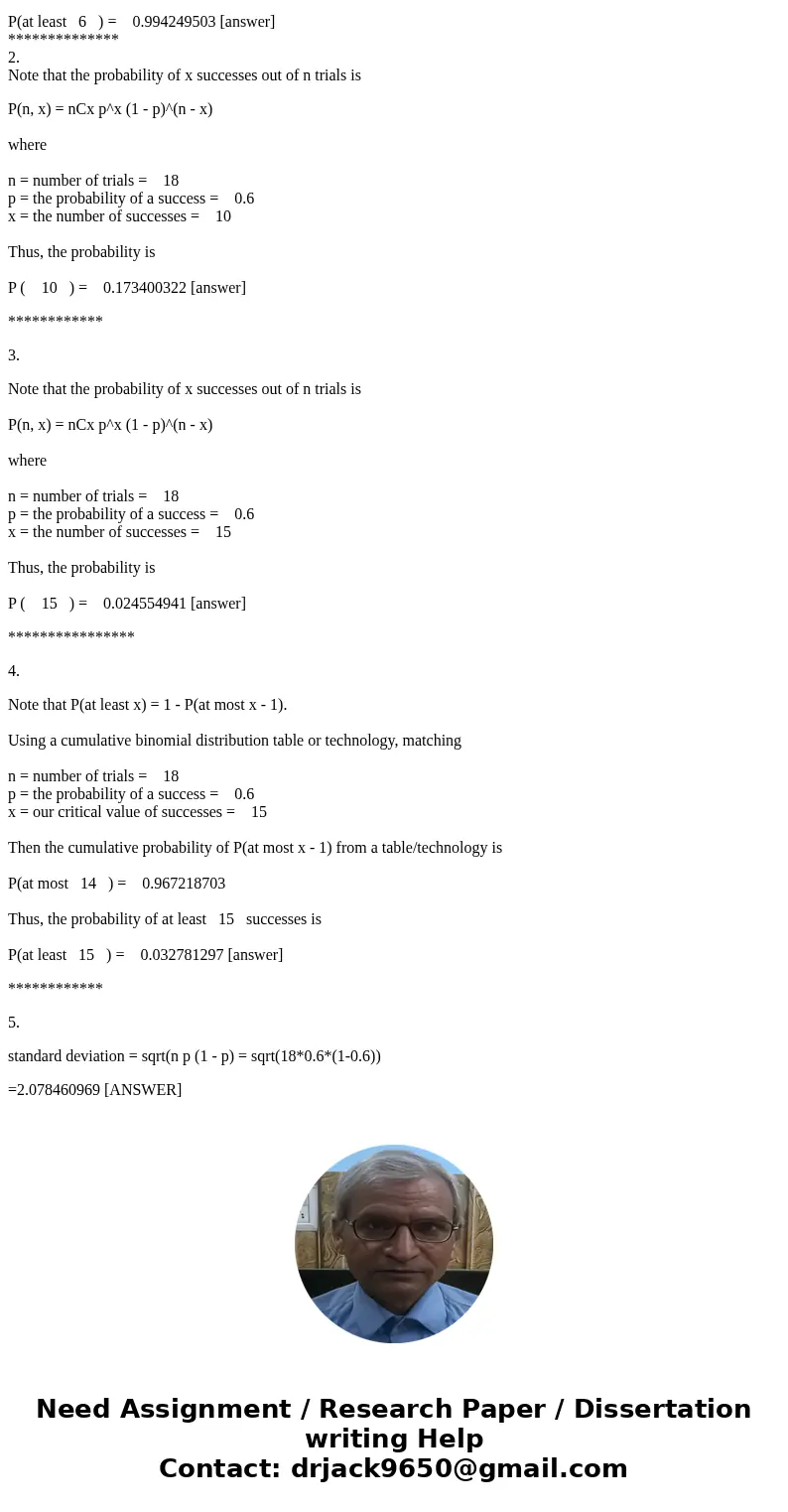60 of the students applying to college are accepted using bi
60% of the students applying to college are accepted, using binominal probability tables, what is the probability that the next 18 applicants: 1. at least 6 will be accepted, 2. exactly 10 will be acceptd, 3. exactly 5 will be rejected, 4. fifteen or more will be accepted, 5. compute standard deviation.
Solution
1.
Note that P(at least x) = 1 - P(at most x - 1).
Using a cumulative binomial distribution table or technology, matching
n = number of trials = 18
p = the probability of a success = 0.6
x = our critical value of successes = 6
Then the cumulative probability of P(at most x - 1) from a table/technology is
P(at most 5 ) = 0.005750497
Thus, the probability of at least 6 successes is
P(at least 6 ) = 0.994249503 [answer]
**************
2.
Note that the probability of x successes out of n trials is
P(n, x) = nCx p^x (1 - p)^(n - x)
where
n = number of trials = 18
p = the probability of a success = 0.6
x = the number of successes = 10
Thus, the probability is
P ( 10 ) = 0.173400322 [answer]
************
3.
Note that the probability of x successes out of n trials is
P(n, x) = nCx p^x (1 - p)^(n - x)
where
n = number of trials = 18
p = the probability of a success = 0.6
x = the number of successes = 15
Thus, the probability is
P ( 15 ) = 0.024554941 [answer]
****************
4.
Note that P(at least x) = 1 - P(at most x - 1).
Using a cumulative binomial distribution table or technology, matching
n = number of trials = 18
p = the probability of a success = 0.6
x = our critical value of successes = 15
Then the cumulative probability of P(at most x - 1) from a table/technology is
P(at most 14 ) = 0.967218703
Thus, the probability of at least 15 successes is
P(at least 15 ) = 0.032781297 [answer]
************
5.
standard deviation = sqrt(n p (1 - p) = sqrt(18*0.6*(1-0.6))
=2.078460969 [ANSWER]


 Homework Sourse
Homework Sourse